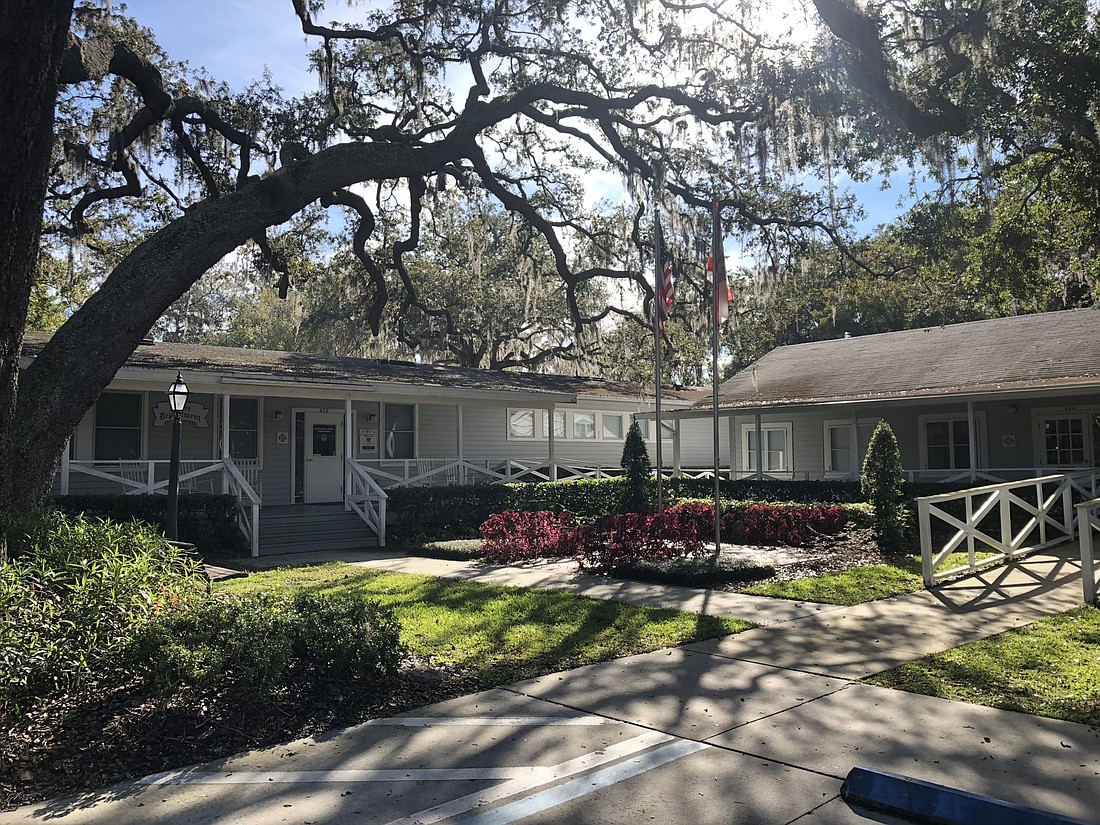- April 25, 2024
-
-
Loading

Loading

Windermere resident Theresa Schretzmann-Myers is determined to change the Windermere Town Council’s mind on its future plans for the 1916 school complex that currently houses the town’s police department and administration offices.
Schretzmann-Myers, a longtime Windermere resident who sits on the town’s Historical Preservation Board and Tree Board, has made several pleas during public workshops and council meetings regarding the former school complex’s importance.
The former four-building schoolhouse, located at 614 Main Street, was built in 1916 and used as a school until 1968, when the town's third school, Windermere Elementary School, opened its doors. The school complex was deemed ineligible for inclusion on the National Register of Historic Places due to renovations of the exterior walls, according to Carl Patterson, Jr. in the book Windermere Among The Lakes: The Story of a Small Town. However, the complex is on Windermere's Local Register.
“Much of the town’s history happened there,” Schretzmann-Myers said. “Almost all of our elders from World War I and World War II, from 1916 until the third school was built in Windermere — Windermere Elementary — went to school there.”
However, the town has plans to tear down the building and use the original site as the new home for a municipal complex that would become the new home for the town’s police department, administration offices and Public Works Department. The one-room 1887 schoolhouse would not be touched.
The town’s years-long initiative has led to several public workshops and studies. Town staff now has two conceptual design options for what the complex would look like and what kind of amenities it would include.
The estimated price of both options ranges between $5.1 and $5.2 million. However, the town charter imposes borrowing limits. So, in March, Windermere residents will be asked to vote on whether to allow the town manager to borrow the required money to fund the next phase of the project.
But Schretzmann-Myers has long advocated against tearing down the complex to make way for the town’s new facilities. She believes a better option would be to adaptively reuse the structure and harden the building with materials, such as heart pine and KEVLAR fabric.
“We would be recycling and restoring the 19th-century heart pine that the building is made out of, if we chose to go this direction,” Schretzmann-Myers said. “I understand the police department is concerned about safety issues, and they want a building that’s hurricane-proof and bullet-proof and an overall hardened building, but you can do that with historic buildings.”
"The size, shape, square footage and the orientation of those buildings do not work for government facilities. They were made for a schoolhouse." – Windermere Town Manager Robert Smith
Schretzmann-Myers added she understands the building needs to be brought up to modern building standards and suggested using hurricane clips. She emphasized several cities have gone the route of adaptive reuse, listing St. Augustine, Gainesville and Winter Garden as examples.
“I just see this as a better direction to go, which would be less of a burden on the taxpayers,” she said. “We’re talking about two facilities costing $5.1 million or $5.2 million that would need to be funded by the taxpayers of Windermere. This is more economical and more feasible, and it’s also sustainable and preserves our history.”
Although town leadership and staff understand the complex’s history, they have not made any indication that they plan to budge.
Why? It’s simply not practical, Windermere Town Manager Robert Smith said. Smith said town staff has explored the option. However, adaptive reuse turned out to be more complicated and costly than starting from scratch.
“The design principles that people generally use in office buildings really does not allow for adaptive reuse of these particular buildings,” Smith said. “She talks about KEVLAR-wrapped buildings, and the White House, and stuff like that, but any contractor or designer who takes a look will tell you that adaptive reuse would cost a lot more than what we’re planning on spending.”
But it’s mainly the orientation and square footage of the schoolhouse and surrounding buildings that would make adaptive reuse unfeasible, Smith said.
“The size, shape and square footage and the orientation of those buildings do not work for government facilities,” he said. “They were made for a schoolhouse. Adaptive reuse would not work with this particular plan, because of the width of the police department, the area that they require, the area that we would need for parking, and so on. And I’ve already talked to all the people that she’s referenced for grants, and the only adaptive reuse projects that they could assist us with would be for the porch, so that it could match what the old schoolhouse looked like.”
Smith also said adaptive reuse would cost more, contradicting what Schretzmann-Myers suggests. Neither Smith or Schretzmann-Myers were able to provide a rough estimate of how much adaptive reuse of the school complex would cost.
“Every contractor or architect we’ve spoken to has said it would cost more to go with adaptive reuse,” Smith said. “Based on our facility needs ... it’s a lot easier to just start from scratch. It just doesn’t make financial or logistical sense to do the adaptive reuse.”